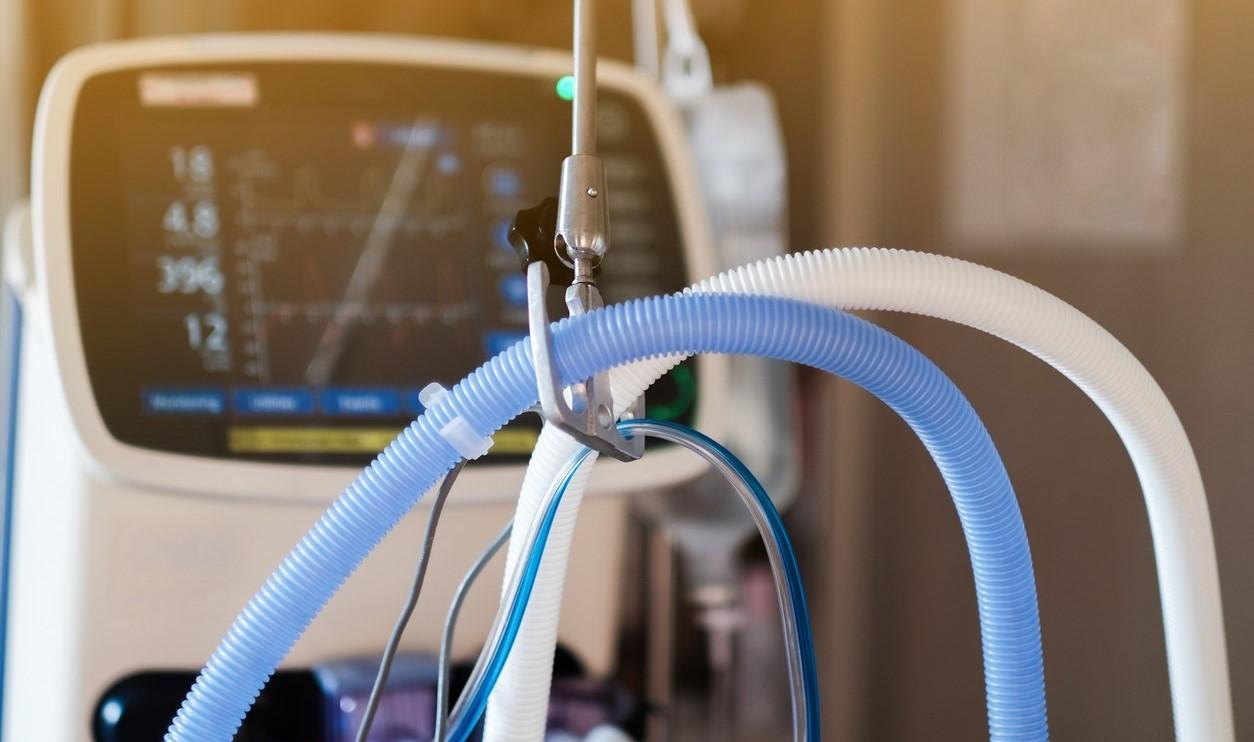A Johns Hopkins study suggests that mechanically ventilated COVID-19 patients who have severe pneumonia and respiratory failure have similar outcomes as those who have other types of pneumonia but required mechanical ventilation longer.
Published yesterday in JAMA Network Open, the study compared 1,846 adult COVID-19 with severe pneumonia due to COVID-19 from March 2020 to June 2021 with those who had non-COVID pneumonia from July 2016 to December 2019. All patients were hospitalized in the Johns Hopkins Healthcare System and required mechanical ventilation during the first 2 weeks after admission.
The primary outcome was 90-day in-hospital death, and the secondary outcomes were time to successful weaning from mechanical ventilation, hospital length of stay, and mechanical ventilation parameters within the first 7 days of admission.
Among the 1,846 patients, 719 (39.0%) had COVID-19 pneumonia; average age was 61.8 years, 61.5% were men, and 35.2% were White. Of the 1,127 patients (61%) who had non-COVID pneumonia, average was 60.9 years, 52.0% were men, and 58.1% were White.
Equally like to die by 90 days
After propensity score matching, COVID-19 patients were more likely to have diabetes, chronic kidney disease, and an impaired immune system and were less likely to have chronic obstructive pulmonary disease (COPD) or to be a current or former smoker than those with other types of pneumonia. COVID-19 patients were also more likely to have a lower white blood cell count at admission and to receive oxygen via high-flow nasal cannula and were less likely to receive noninvasive mechanical ventilation.
In propensity score-matched analyses, relative to patients with non-COVID pneumonia, COVID pneumonia patients were equally likely to die by 90 days (odds ratio, 1.04) and had similar mechanical ventilation parameters but lower rates of successful weaning from mechanical ventilation (subdistribution hazard ratio [HR], 0.81).
SARS-CoV-2 may cause persistent and slower-to-resolve alveolar inflammation that could contribute to a longer duration of mechanical ventilation.
The reasons patients with COVID-19 pneumonia required mechanical ventilation for longer periods were likely multifactorial, the researchers said.

"Emerging evidence suggests SARS-CoV-2 may cause persistent and slower-to-resolve alveolar [air sac] inflammation that could contribute to a longer duration of mechanical ventilation," they wrote. "COVID-19 has also been associated with higher doses of hypnotic-sedative medications during the beginning of the pandemic, which, along with constraints on family visitation, may increase risk of delirium and duration of mechanical ventilation."
Risks of harm
The researchers noted that, early in the pandemic, some experts suggested that COVID-19 pneumonia respiratory failure had a different presentation and higher death rate than that due to other pathogens. This belief and some small studies comparing the two types of pneumonia led some providers to propose deviating from standard ventilation strategies for COVID-19 pneumonia patients, they said.
Proponents of non-standard ventilation strategies argued that the strict adherence to low ventilatory tidal volume (volume of air that moves in or out of the lungs with each breath) recommended in non-COVID pneumonia may be unnecessary and even harmful in COVID-19 patients.
But as this study suggests, given that COVID-19 pneumonia has similar manifestations as classic acute respiratory distress syndrome (ARDS) from other causes, low tidal volume and prone positioning are the only interventions proven to reduce death rates, the researchers said.
"These findings suggest that mechanical ventilation use in COVID-19 pneumonia should follow the same evidence-based guidelines as any pneumonia," they wrote. "We caution that deviating from current evidence-based practices (until there are robust data indicating why, how, and when) risks harm."
Deviating from current evidence-based practices (until there are robust data indicating why, how, and when) risks harm.




















